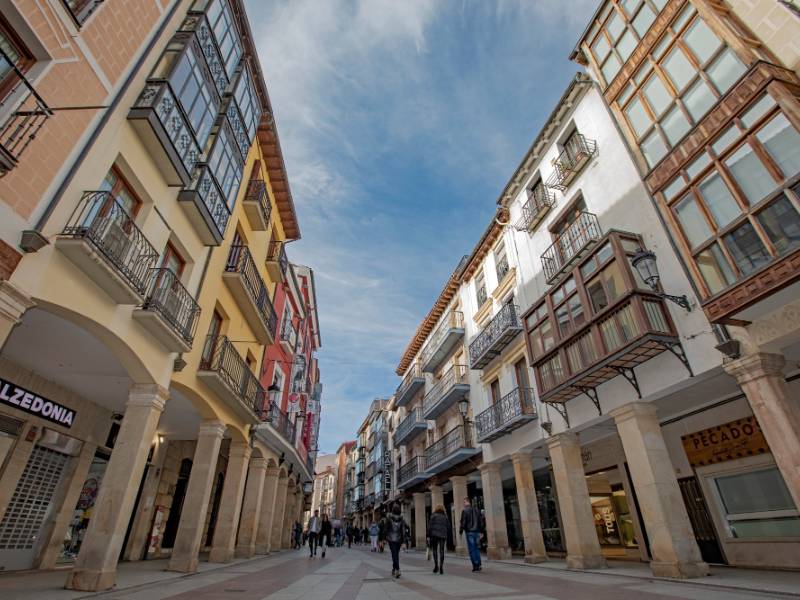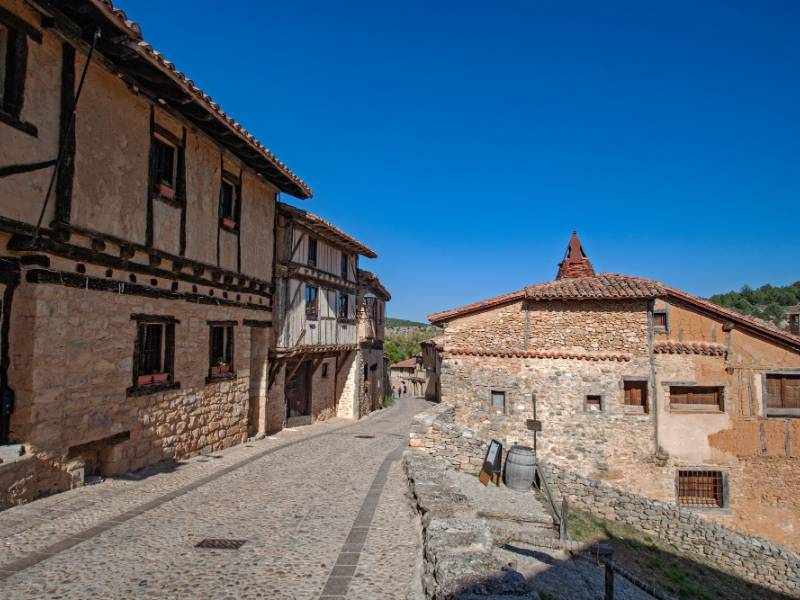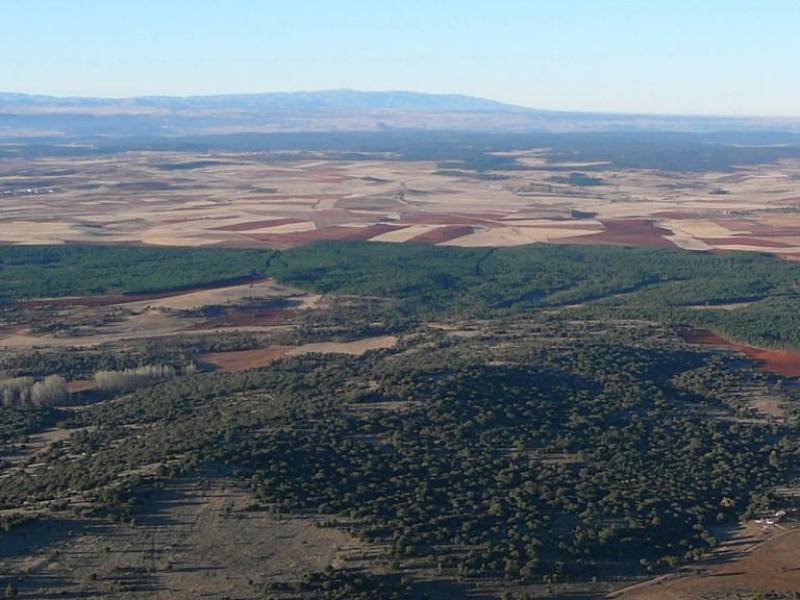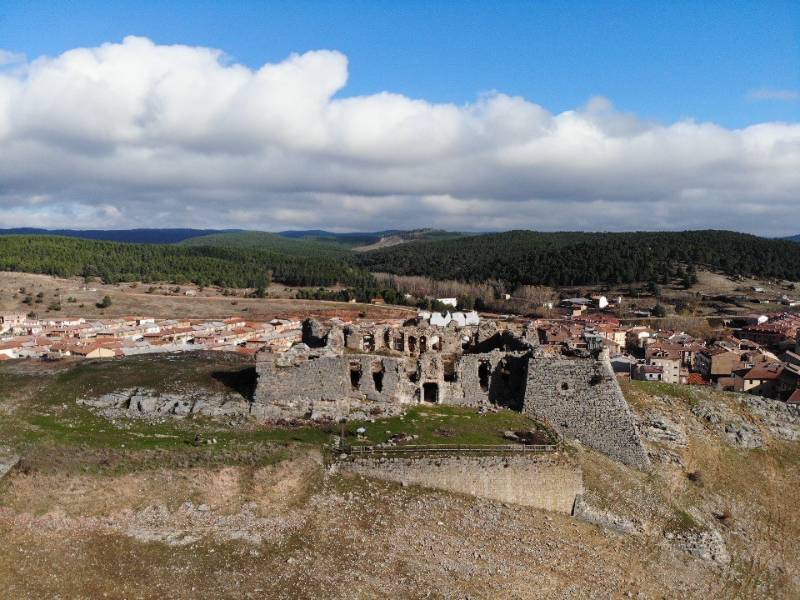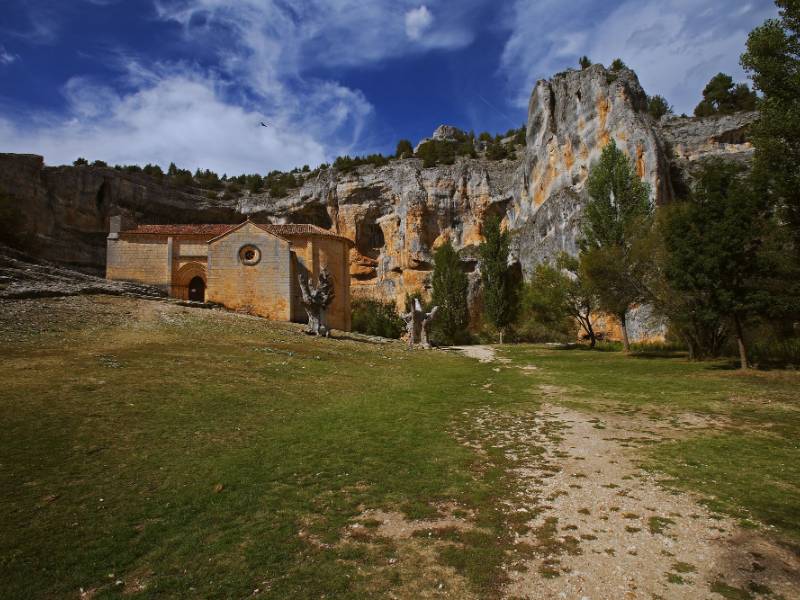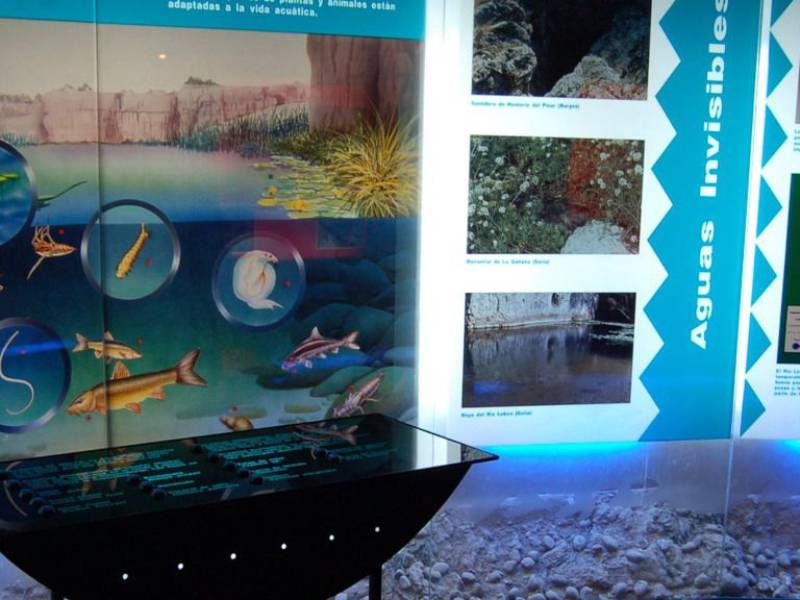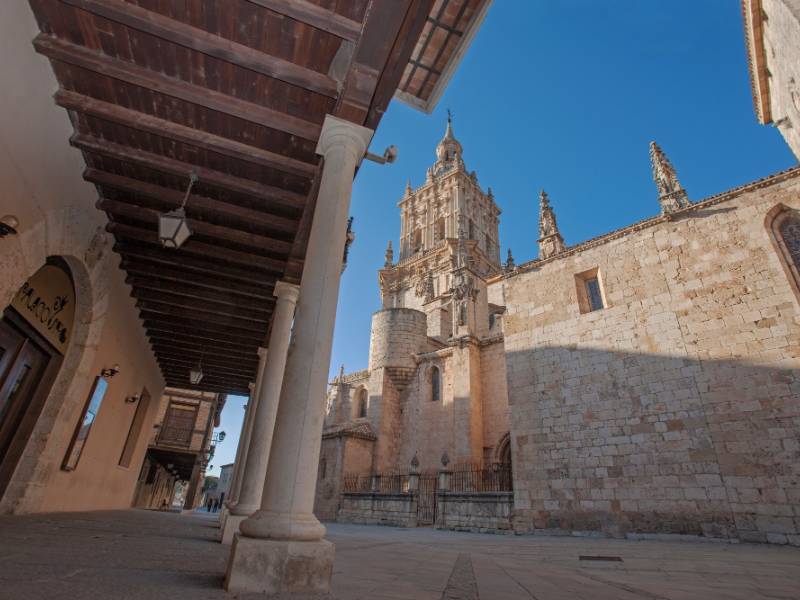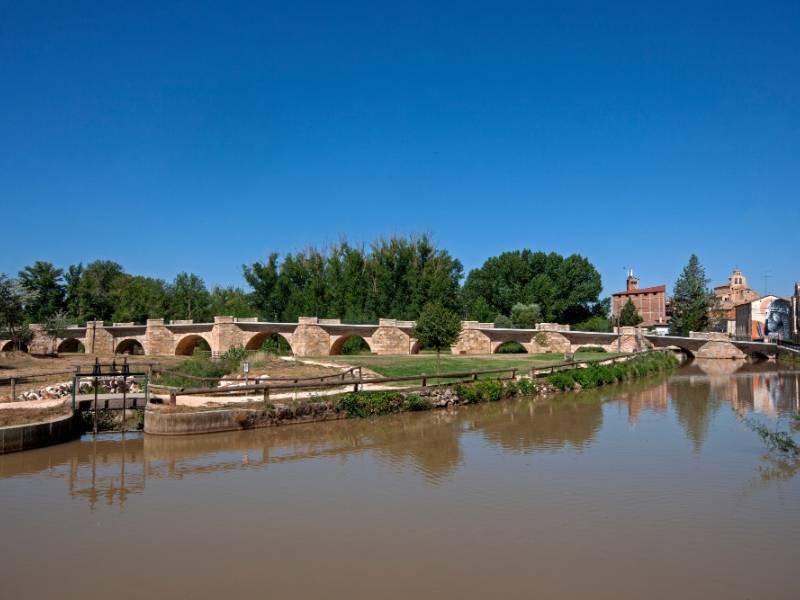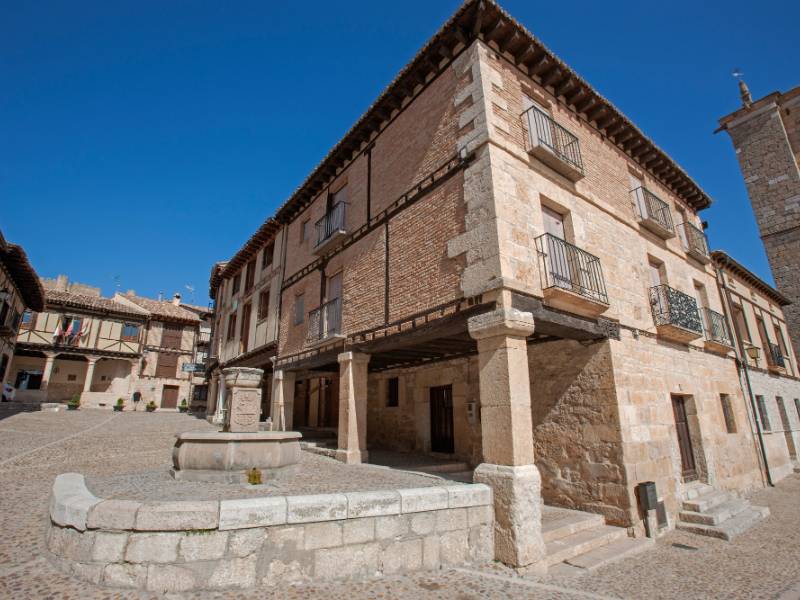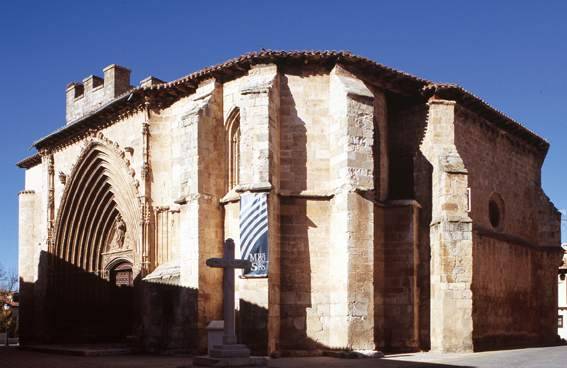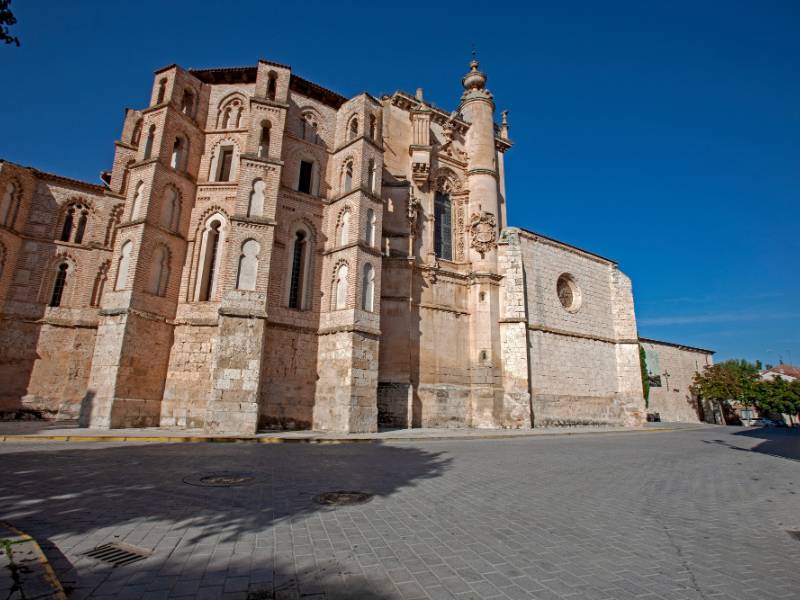Route 5 Center. Section 1 - Peñaranda de Duero
- Previous
- Following
Defined by its strategic hilltop location as a fortress town, it was repopulated when the boundaries of Christendom reach the Duero. It is set in a natural landscape of immense ecological wealth.
Declared a Historic Site in 1974, the old quarter houses various monuments reflecting traditional Castilian architecture. The main square, known as Plaza de los Duques de Peñaranda, became the focal point of the town in the 16th century following the construction of the Palace and Collegiate Church by the Third Count of Peñaranda. This space, built entirely in the Renaissance style, is presided over by a civil building and a religious one, representing the old regime.
Other noteworthy sites include the castle situated on the hilltop, and other religious buildings standing on the outskirts, such as the Franciscan Conceptionist Convent, founded by the Count and Countess of Miranda in 1558, and associated with La Piedad Hospital and the Convent of El Carmen.
Reference to content
What to see?
 Ximeno PharmacyMore information
Ximeno PharmacyMore information17th century building. Pharmacy and apothecary museum. Laboratories (18th century): Talavera pots, utensils, library and medicinal plants.
 Castle of Peñaranda de DueroMore information
Castle of Peñaranda de DueroMore informationCastle from the XI century which maintains zones in very good condition and preserved. It was founded in times of Fernán González, acquired its current structure in the XV century. It retains walls with...
 Parish Church and excolegial de Santa AnaMore information
Parish Church and excolegial de Santa AnaMore informationBaroque facade, the three upper busts and the columns are Roman, from the town of Clunia. 16th-century structure containing, in the presbytery, the heart of the Count of Montijo, the father of the Empress...
 Major Square of PeñarandaMore information
Major Square of PeñarandaMore informationCastilian plaza with arcades enclosed by the palace, the church and the arch of the town walls. In the centre is a magnificent 16th century monument.
 Palace Condes de Miranda / of the Zuñiga and AvellanedaMore information
Palace Condes de Miranda / of the Zuñiga and AvellanedaMore informationPalace built at the beginning of the 16th century. It has a plateresque façade, a magnificent courtyard with a double arcade, elegant salons and a staircase of honour, gothic, mudéjar and renaissance coffered...

